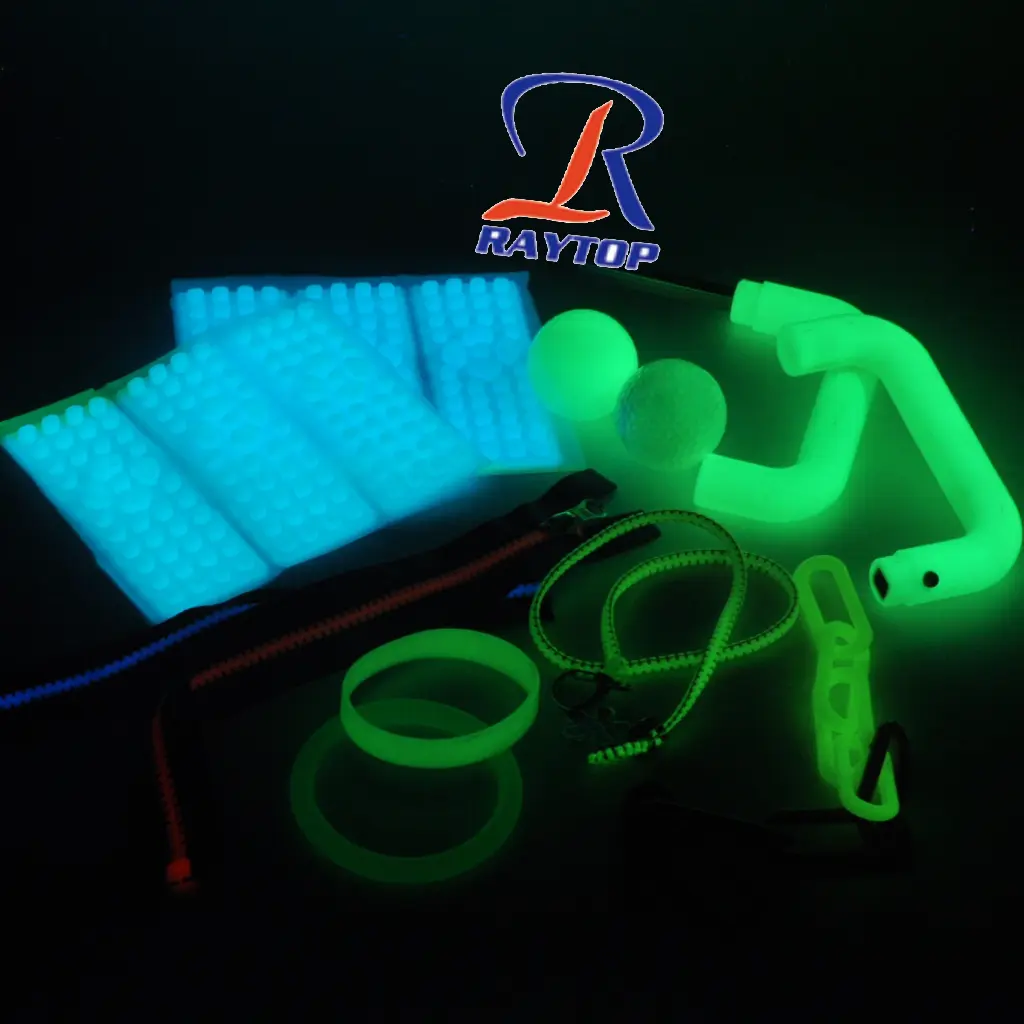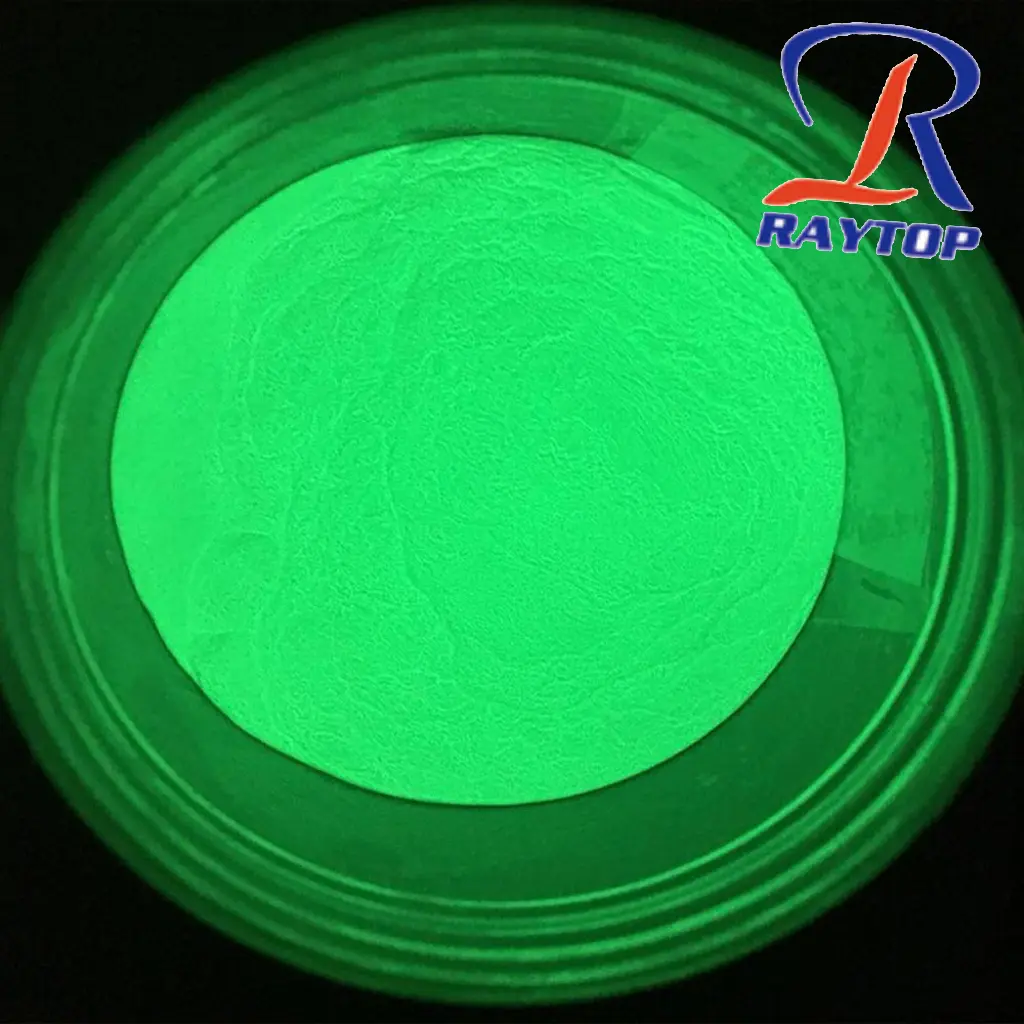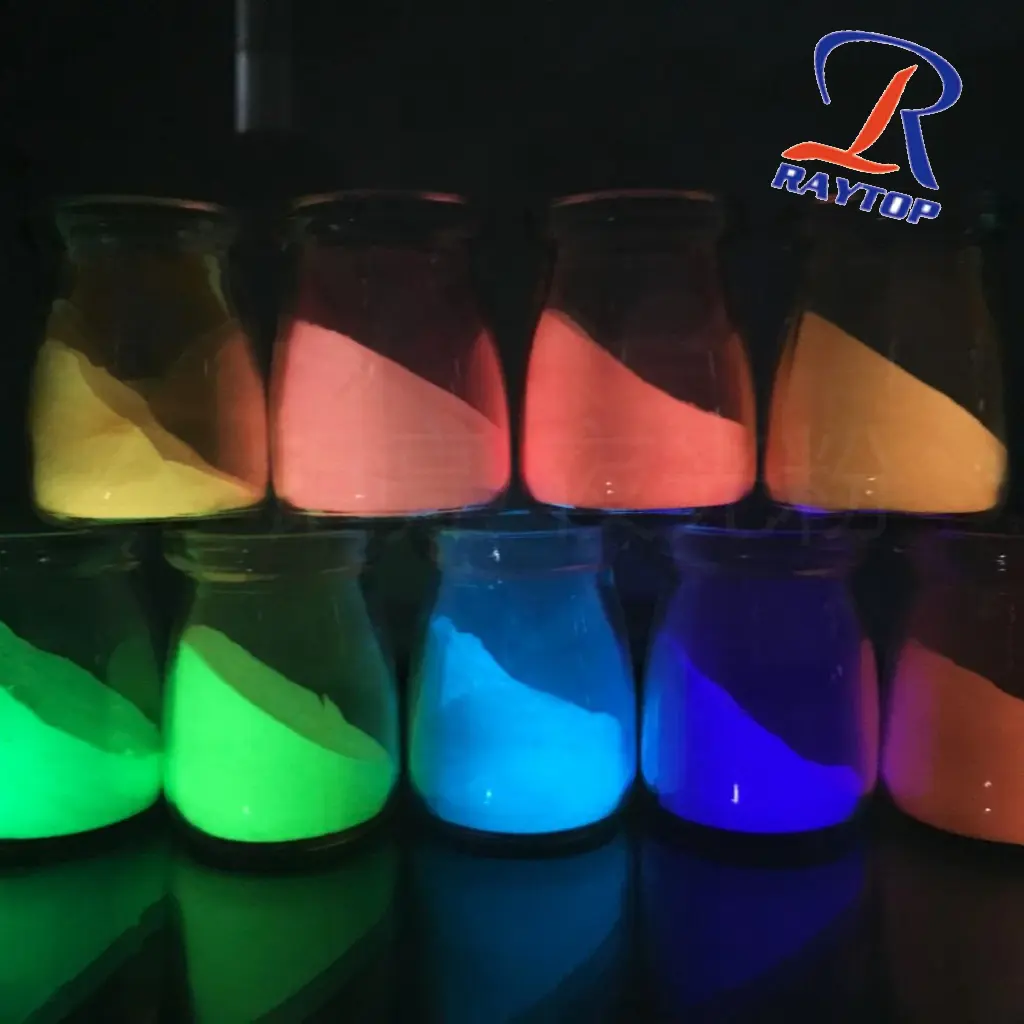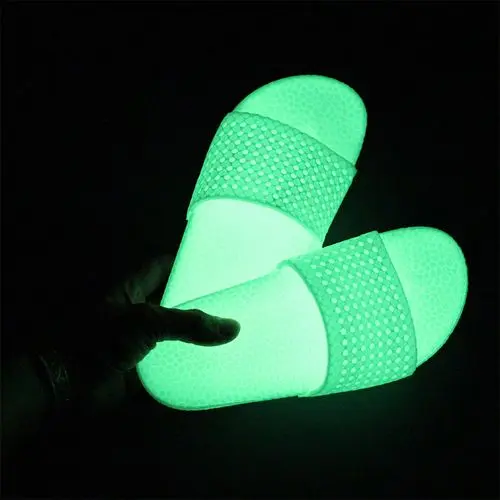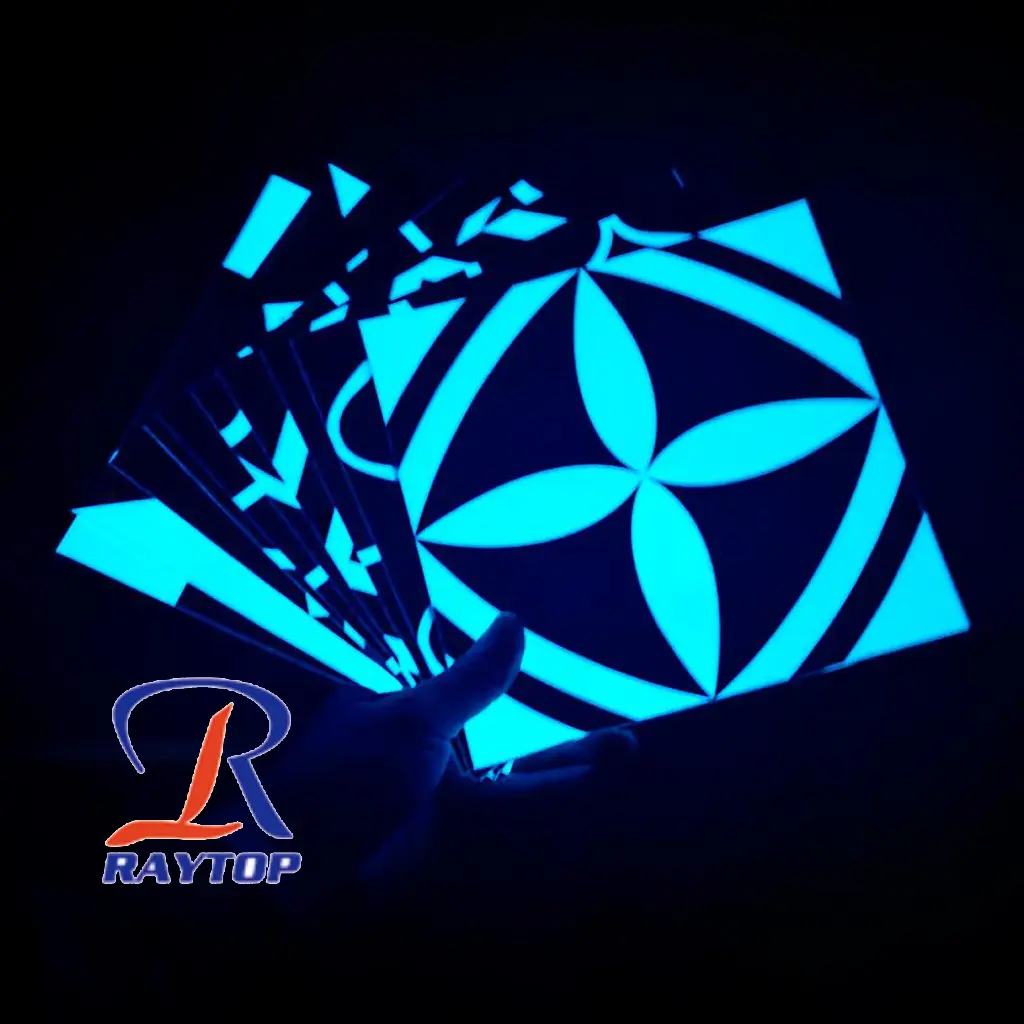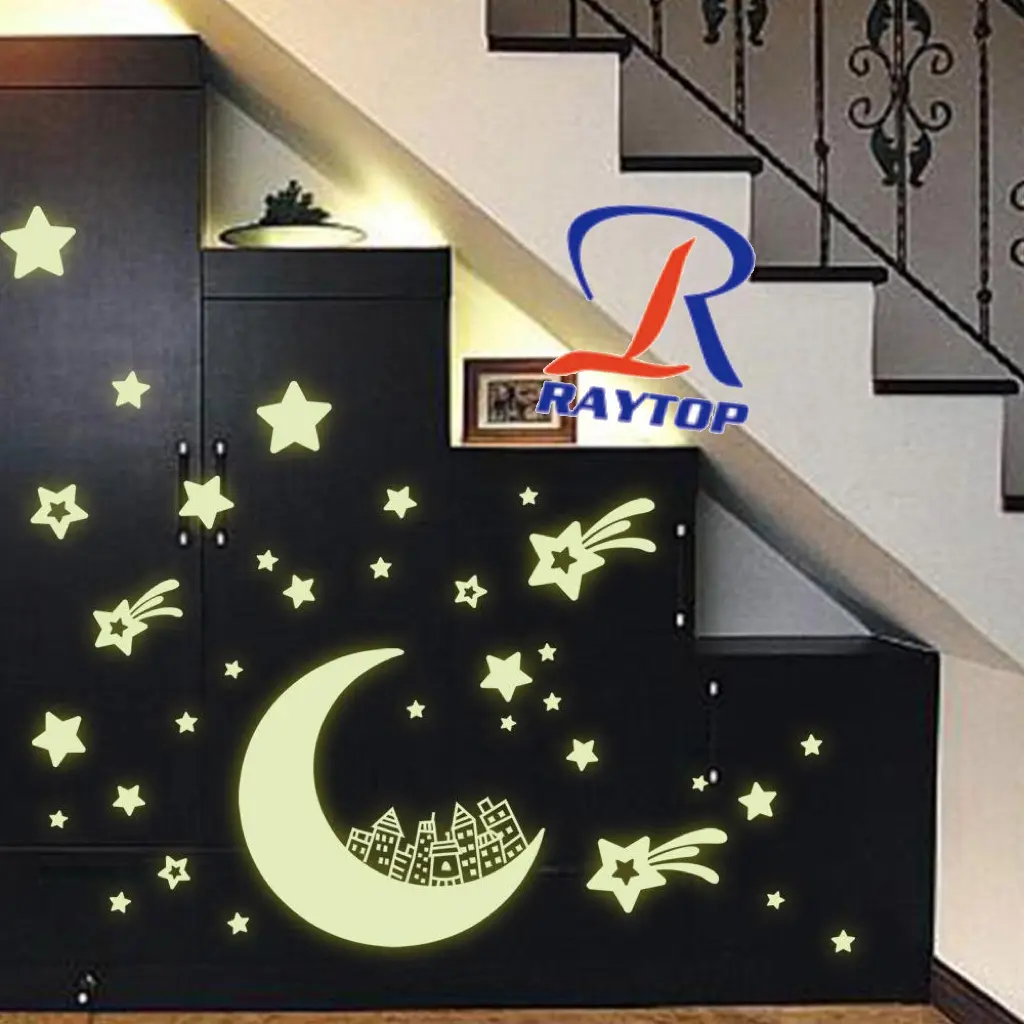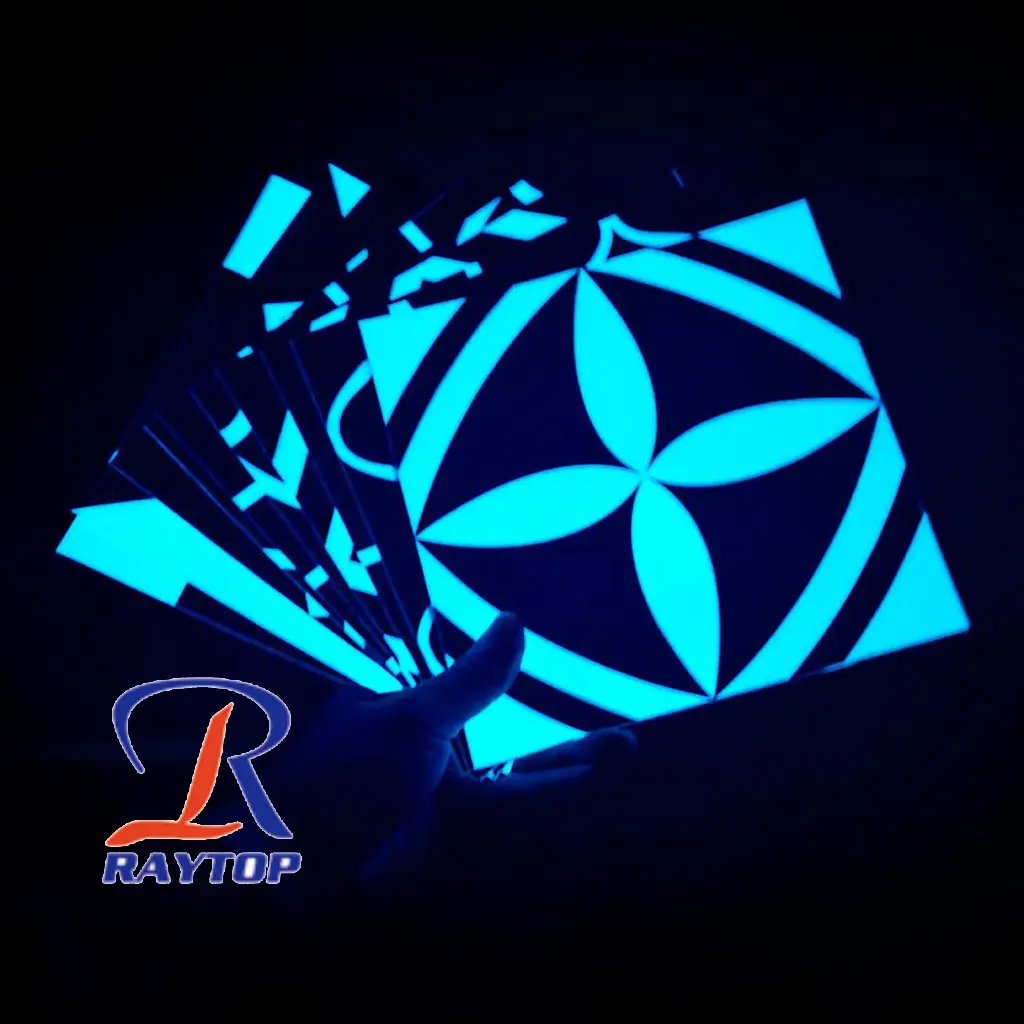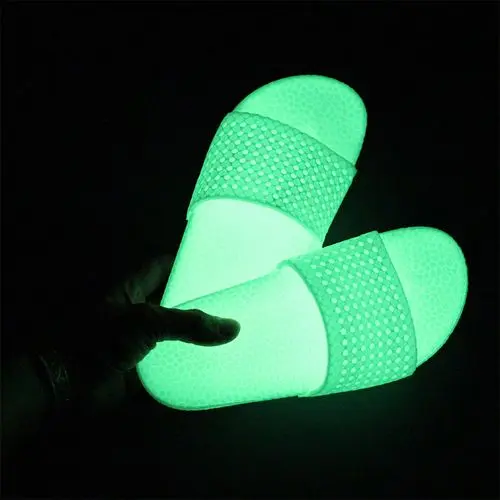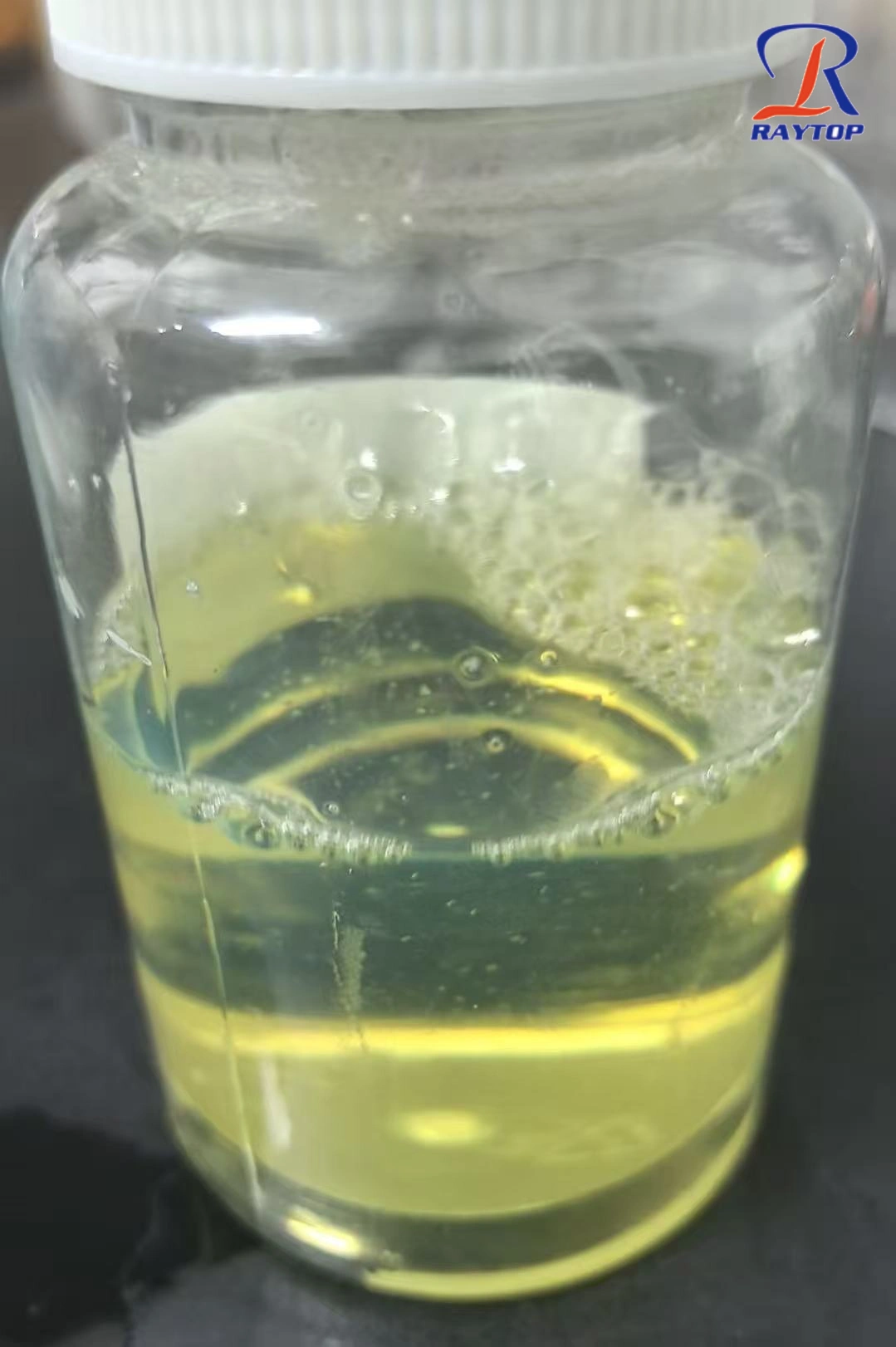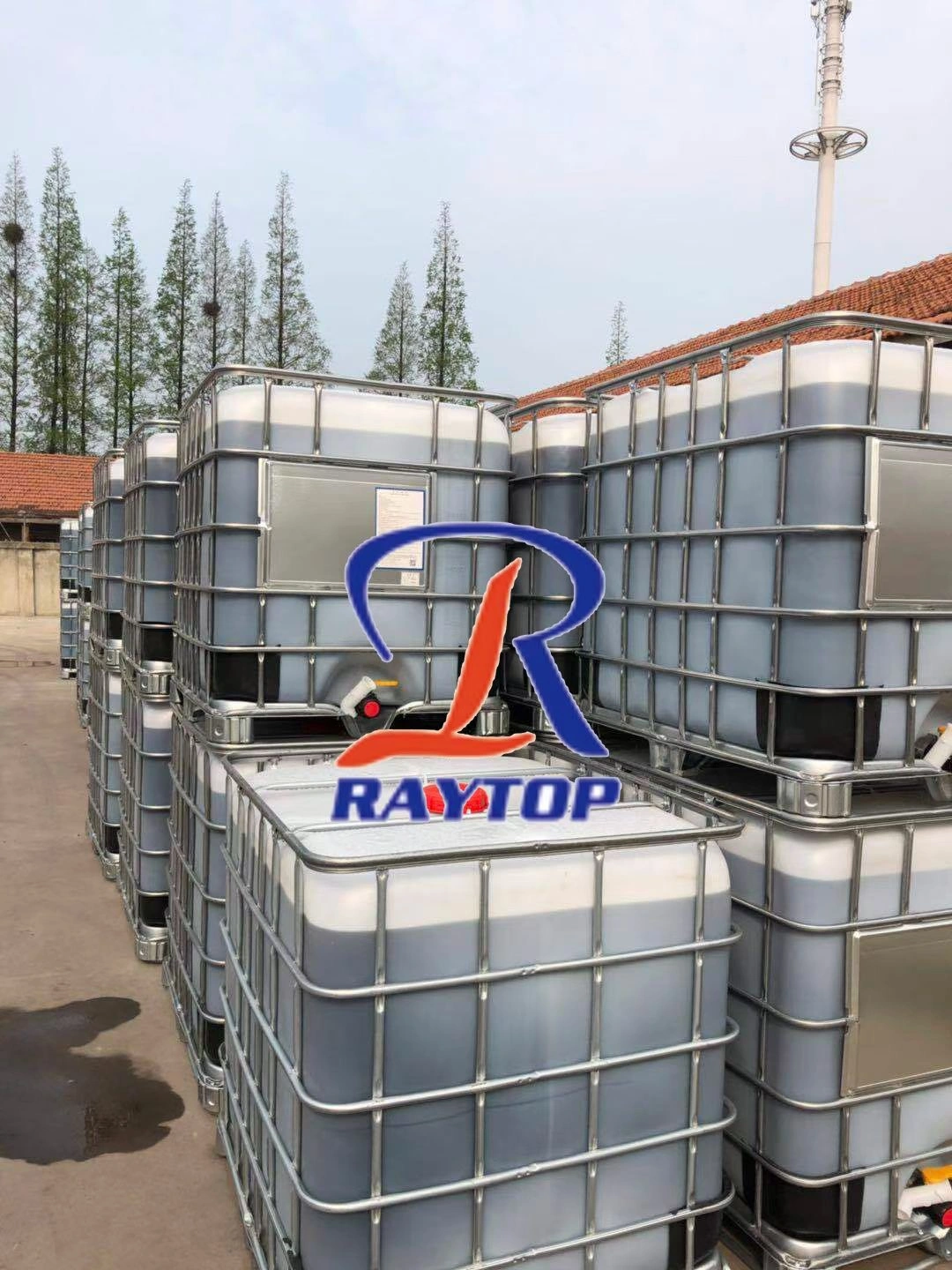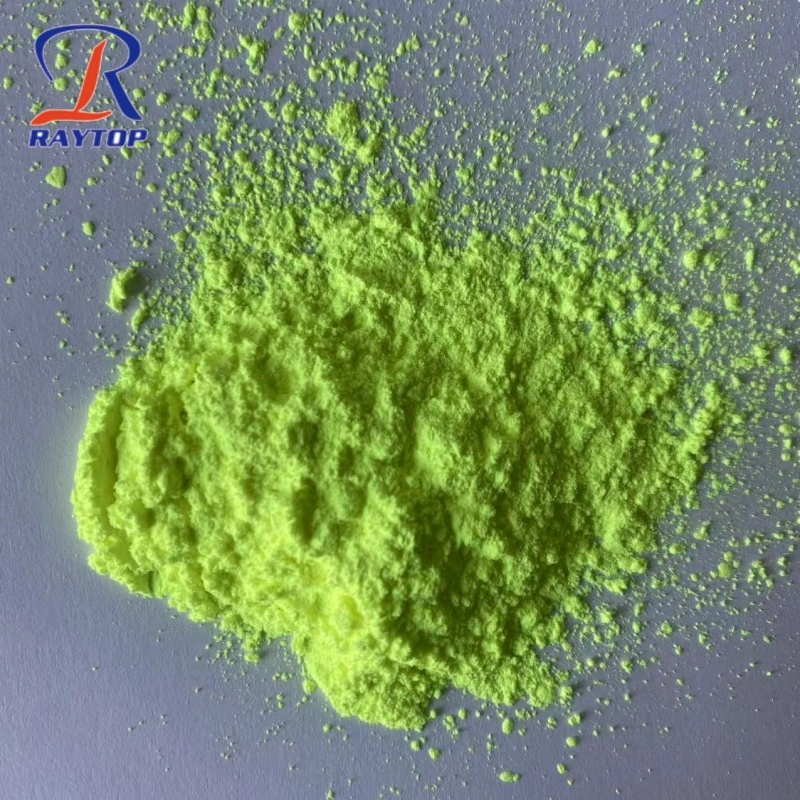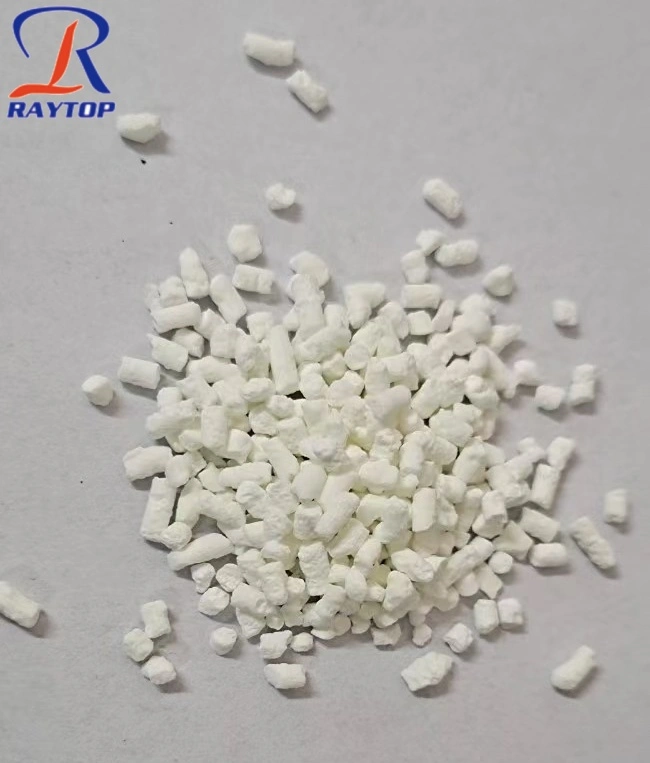Phosphorescent powder is a unique type of fluorescent powder that can emit light in dim or completely dark environments. This remarkable powder typically consists of components such as phosphates and rare earth elements. The key feature of phosphorescent powder is its ability to absorb light energy and release it when the light diminishes, making it widely used in the injection molding industry.
The application of phosphorescent powder
Unique Luminescent Properties: Phosphorescent powder can emit light continuously after absorbing light, making it highly practical in low-light or nighttime conditions. Products manufactured through injection molding, such as toys, signage, and safety equipment, greatly benefit from this property.
Diverse Product Range: Phosphorescent powder finds extensive applications in a wide range of end products produced through injection molding. These include plastic toys, switch panels, cellphone cases, glow-in-the-dark indicators, emergency exit signs, and more. This diversity allows manufacturers to easily select products tailored to their specific needs.
The application of phosphorescent powder in the injection molding industry has become increasingly common, primarily due to the following reasons:
Enhanced Aesthetic Appeal:
Phosphorescent powder adds a captivating visual dimension to injection-molded products. It imparts a luminous glow in low-light conditions, creating an eye-catching and memorable effect.
Safety and Visibility:
In applications where visibility is crucial, such as emergency signage or safety equipment, phosphorescent materials offer an added level of safety. They remain visible even in the absence of external light sources.
Energy Efficiency:
Phosphorescent materials absorb and store light energy, then release it slowly over time. This property reduces the need for continuous external illumination, making them energy-efficient and environmentally friendly.
Diverse Applications:
Phosphorescent powder can be incorporated into a wide range of injection-molded products, from consumer goods to industrial components. This versatility allows for creative and functional applications across various industries.
Durability and Longevity:
Injection-molded products infused with phosphorescent powder retain their luminescence over an extended period. This longevity ensures that the visual impact remains effective throughout the product's lifespan.
Customization Options:
Phosphorescent powders come in various colors and particle sizes, offering customization possibilities for manufacturers. This allows for tailored solutions to meet specific design and branding requirements.
Compliance with Safety Standards:
Many industries, such as aerospace, automotive, and safety equipment, have stringent regulations regarding visibility and safety. Phosphorescent materials help manufacturers meet these standards and provide added peace of mind for end-users.
Innovative Design Opportunities:
Designers and engineers can leverage phosphorescent materials to create products with unique and innovative features. These materials open up new avenues for creativity in product development.
Market Differentiation:
Products that incorporate phosphorescent elements stand out in the market. They capture consumer attention and can serve as a distinguishing factor for brands seeking to differentiate themselves from competitors.
Positive Environmental Impact:
By reducing the need for external lighting sources, products with phosphorescent powder contribute to energy conservation efforts. This aligns with sustainability goals and reflects positively on a company's environmental commitment.
The increasing prevalence of phosphorescent powder in the injection molding industry is driven by its ability to enhance aesthetics, improve safety, and offer unique design opportunities. Its versatility, energy efficiency, and compliance with safety standards make it a valuable addition to a wide range of products, from consumer goods to industrial applications. As the demand for visually striking and functionally innovative products continues to grow, phosphorescent materials are poised to play an even more significant role in shaping the future of injection molding.
Phosphorescent powder brings significant value to injection-molded products:
Enhanced Safety: Phosphorescent products provide additional safety in low-light or nighttime situations, facilitating easier identification and recognition of objects. This is crucial for activities like nighttime driving, emergency evacuation, and safety signage.
Innovation: The application of phosphorescent powder adds an innovative element to products, making them more attractive in the market. This helps manufacturers attract a larger consumer base and increase sales.
Phosphorescent powder brings significant value to injection-molded products for several compelling reasons:
Enhanced Visibility and Safety: Phosphorescent powder provides a luminous glow, making products highly visible in low-light or dark environments. This is crucial for safety equipment, emergency signage, and other applications where visibility is paramount.
Energy Efficiency: Phosphorescent materials absorb and store light energy, then release it slowly over time. This reduces the need for continuous external illumination, leading to energy savings and a reduced environmental footprint.
Diverse Applications: Phosphorescent powder can be incorporated into a wide range of injection-molded products, from consumer goods to industrial components. This versatility allows for creative and functional applications across various industries.
Long-lasting Luminescence: Products infused with phosphorescent powder retain their glow for an extended period. This ensures that the visual impact remains effective throughout the product's lifespan.
Compliance with Safety Standards: Industries with strict safety regulations, such as aerospace, automotive, and safety equipment, benefit from the visibility-enhancing properties of phosphorescent materials. They help manufacturers meet industry standards and provide added safety assurance for end-users.
Customization Options: Phosphorescent powders come in various colors and particle sizes, offering customization possibilities for manufacturers. This allows for tailored solutions to meet specific design and branding requirements.
Innovative Design Opportunities: Designers and engineers can leverage phosphorescent materials to create products with unique and innovative features. These materials open up new avenues for creativity in product development.
Market Differentiation: Products that incorporate phosphorescent elements stand out in the market. They capture consumer attention and can serve as a distinguishing factor for brands seeking to differentiate themselves from competitors.
Positive Environmental Impact: By reducing the need for external lighting sources, products with phosphorescent powder contribute to energy conservation efforts. This aligns with sustainability goals and reflects positively on a company's environmental commitment.
The integration of phosphorescent powder into injection-molded products is a strategic choice that adds significant value. Its ability to enhance visibility, improve safety, and offer unique design opportunities positions it as a valuable asset across various industries. As consumer demand for visually striking and environmentally responsible products continues to grow, phosphorescent materials are poised to play an even more crucial role in shaping the future of injection molding.
In conclusion, the use of phosphorescent powder in the injection molding industry enhances the visual appeal and practicality of products, increasing their overall value. With ongoing technological advancements, the prospects for phosphorescent powder applications are expected to expand further, providing injection molding manufacturers with greater opportunities for innovation and competitive advantages.
Illuminating Innovation: Phosphorescent Powder in Injection Molding
Phosphorescent powder has emerged as a transformative additive in the field of injection molding. Its unique properties offer a range of benefits, from enhanced visibility to energy efficiency. In this article, we'll delve into the parameters and considerations when utilizing phosphorescent powder in injection molding processes.
Parameters for Using Phosphorescent Powder in Injection Molding
Particle Size:
The particle size of phosphorescent powder is a critical parameter. Finer particles tend to disperse more uniformly within the material, resulting in a smoother and more even phosphorescent effect. Coarser particles may provide a more pronounced glow but may require additional attention to dispersion.
Concentration:
The concentration of phosphorescent powder is measured in terms of its percentage in relation to the total material weight. Higher concentrations generally lead to a more intense glow. However, it's crucial to strike a balance to avoid compromising the material's integrity or processing characteristics.
Material Compatibility:
Phosphorescent powder is compatible with a variety of polymers commonly used in injection molding, including polyethylene, polypropylene, polystyrene, and more. However, compatibility testing is essential to ensure the chosen powder integrates seamlessly with the specific material being used.
Processing Temperature:
It's important to consider the processing temperature of the chosen polymer, as phosphorescent materials may have specific temperature thresholds at which they function optimally. Careful control of processing parameters ensures proper dispersion and retention of phosphorescent properties.
Light Source Exposure:
The performance of phosphorescent materials depends on the type and duration of light exposure. Optimal results are achieved when the material is exposed to a high-intensity light source for an adequate period, allowing it to charge effectively.
Injection Molding Conditions:
Factors such as injection speed, melt temperature, and mold temperature play a crucial role in the successful incorporation of phosphorescent powder. Fine-tuning these parameters ensures uniform dispersion and consistent results.
Considerations for Effective Use
Uniform Dispersion:
Achieving a uniform dispersion of phosphorescent powder within the polymer matrix is crucial for consistent and aesthetically pleasing results. Proper mixing and processing techniques are essential.
Post-Processing Considerations:
After injection molding, additional finishing processes may be necessary to achieve the desired surface finish and texture, especially when working with phosphorescent materials.
Regulatory Compliance:
Ensure that the chosen phosphorescent powder complies with industry standards and regulations, particularly in applications where safety and visibility are critical.
Phosphorescent powder opens up a realm of possibilities in injection molding, offering unique visual and functional benefits. By understanding and carefully controlling parameters such as particle size, concentration, and material compatibility, manufacturers can harness the full potential of this innovative additive. With proper considerations and precise execution, phosphorescent powder can illuminate products with a captivating and sustainable glow.
FAQ
Q1: What is Phosphorescent Powder?
A: Phosphorescent powder, also known as glow-in-the-dark powder, is a luminescent material that absorbs and stores light energy when exposed to a light source. It then emits this energy in the form of visible light over an extended period, creating a glowing effect in the dark.
Q2: How is Phosphorescent Powder Used in Injection Molding?
A: Phosphorescent powder is mixed with the polymer material used in injection molding. It is carefully dispersed to ensure even distribution. During the molding process, the material containing phosphorescent powder is injected into a mold to create a finished product.
Q3: What Polymers are Compatible with Phosphorescent Powder?
A: Phosphorescent powder is compatible with a wide range of polymers commonly used in injection molding, including but not limited to polyethylene, polypropylene, polystyrene, and other thermoplastic materials.
Q4: What are the Benefits of Using Phosphorescent Powder in Injection Molding?
A: The use of phosphorescent powder in injection molding offers benefits such as enhanced visibility in low-light conditions, improved safety features, energy efficiency, and the creation of visually striking and innovative products.
Q5: Are There Different Particle Sizes of Phosphorescent Powder?
A: Yes, phosphorescent powder comes in various particle sizes. Finer particles tend to disperse more uniformly within the material, resulting in a smoother and more even phosphorescent effect. Coarser particles may provide a more pronounced glow but may require additional attention to dispersion.
Q6: How is the Concentration of Phosphorescent Powder Determined?
A: The concentration of phosphorescent powder is determined based on the desired level of glow in the finished product. Higher concentrations generally lead to a more intense glow, but it's important to strike a balance to avoid compromising the material's integrity or processing characteristics.
Q7: What Factors Influence the Performance of Phosphorescent Materials in Injection Molding?
A: The performance of phosphorescent materials depends on factors such as light source exposure, processing temperature, injection molding conditions, and the type of polymer used. Proper control of these parameters ensures optimal results.
Q8: Can Products with Phosphorescent Powder be Used Outdoors?
A: Yes, products with phosphorescent powder can be used outdoors. However, it's important to consider factors like UV exposure and weather resistance when selecting the appropriate phosphorescent material for outdoor applications.
Q9: How is Uniform Dispersion Achieved in Injection Molding with Phosphorescent Powder?
A: Achieving a uniform dispersion of phosphorescent powder within the polymer matrix requires proper mixing and processing techniques. Careful control of injection molding conditions and material preparation ensures consistent and aesthetically pleasing results.
